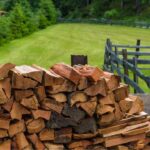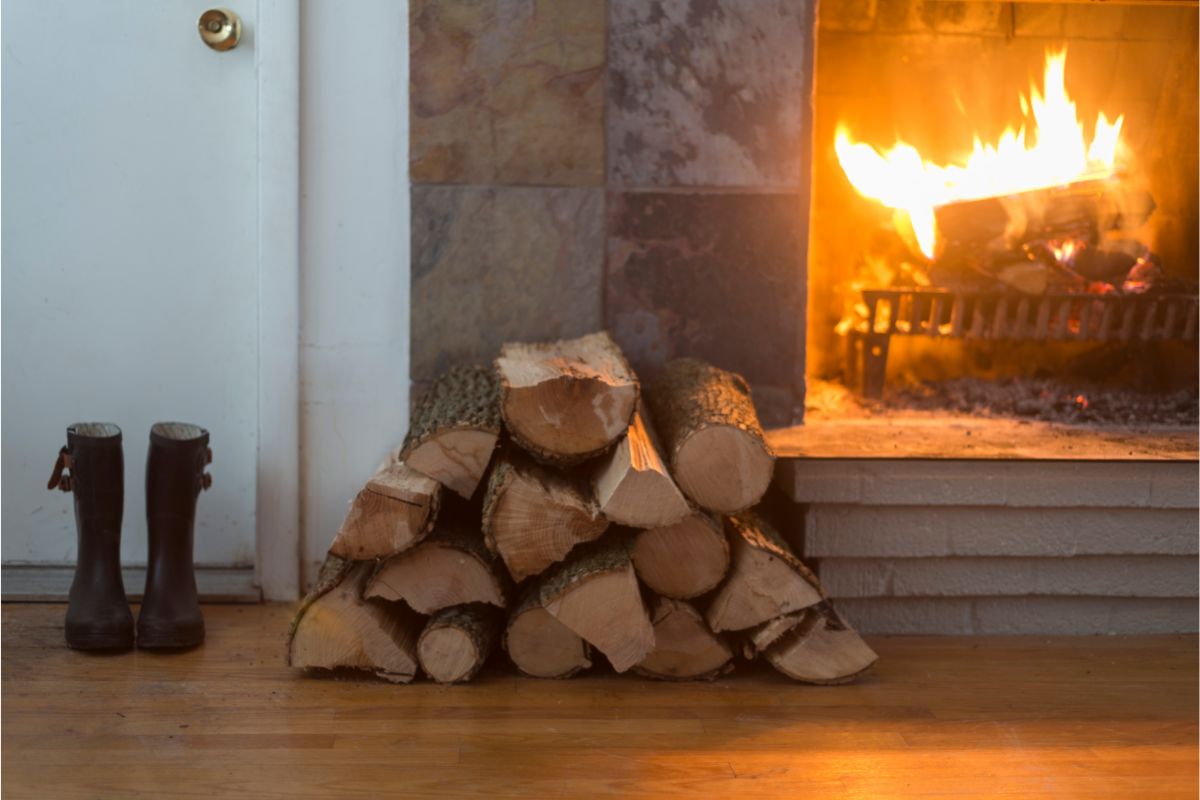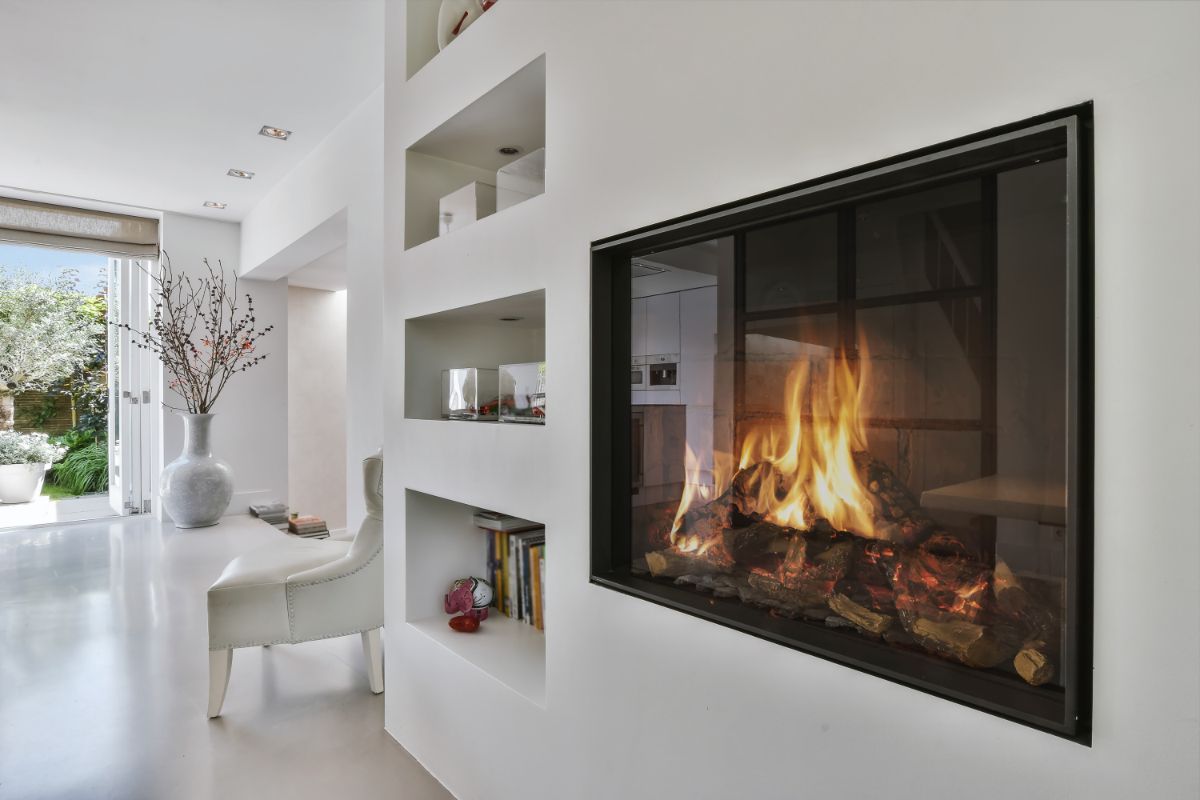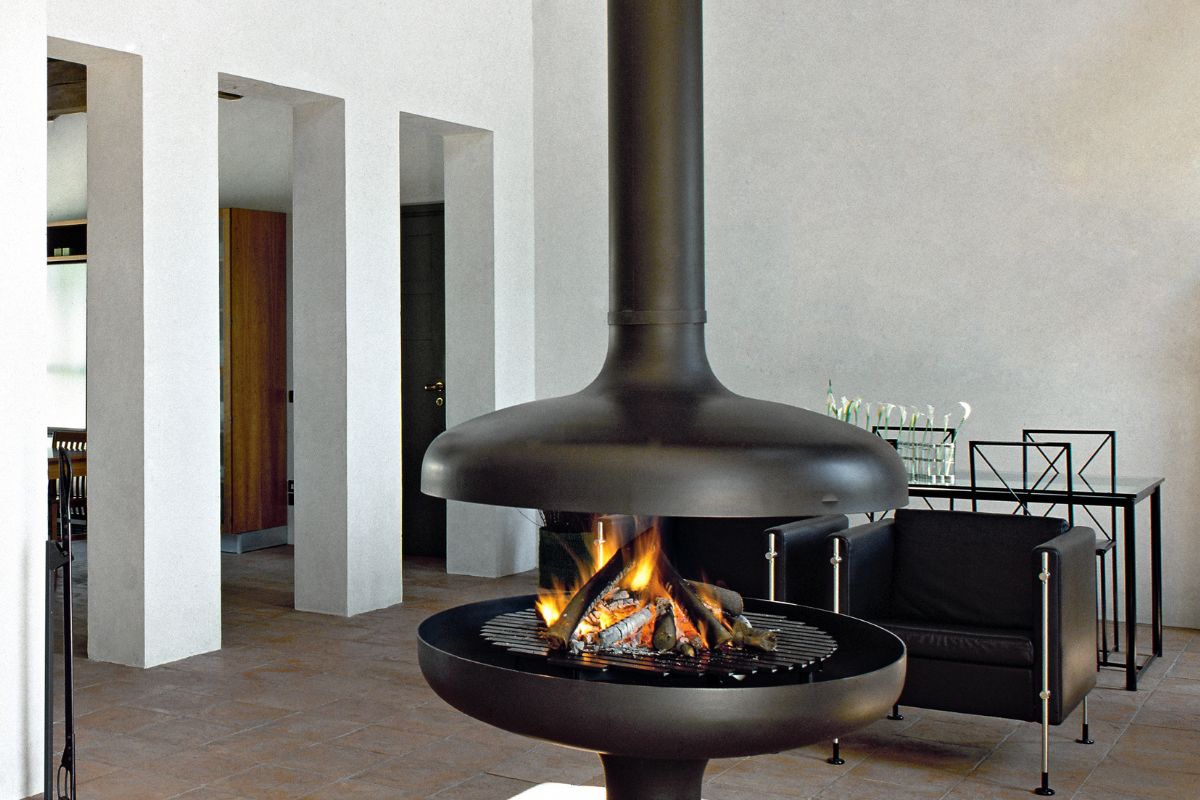A fireplace damper is a mechanism that is manually opened or closed.
Its function is to allow gases as well as other pollutants from a fireplace to safely vent from a building when it is open, but to also keep air from escaping the house when a fireplace is not in use.

Typically, fireplace dampers are located at the bottom of a chimney, the top of a chimney, or the bottom of a flue.
To be able to endure the temperature of the flames and the smoke, air, and gases that emerge from them, dampers are typically built of metal or ceramic.
An open damper lets the fireplace’s smoke and other toxic gases escape, as well as allowing additional air from outside to feed the fire.
If a damper is closed while a fireplace is being used, smoke or gases will enter the space, posing a major health risk if not immediately addressed.
A closed damper aids in retaining hot air during winter and cool air during summer because an open damper might result in a draught inside the chimney as well as heating loss from a residence.
This article will discuss fireplace dampers and why they are important to use with your fireplace.
Where Can You Find A Fireplace Damper?
A conventional fireplace damper will typically be installed at the top of the fireplace, right within the “throat” of the chimney, which is the base of the chimney.
This makes it possible to conceal the damper out of sight while still making it accessible from inside the fireplace.
A damper, often referred to as a top-mounted damper or perhaps a top-sealing damper cap, may occasionally be found at the top of your chimney.
Another site for a damper is at the bottom of the chimney, directly above a wood burner or other fireplace stove that uses the flue.
What Purpose Does A Chimney Damper Serve?
Why should you employ a fireplace damper? A damper inside a chimney is typically used with a wood-burning fireplace and is usually positioned just above the fireplace or on the top of the chimney.
A damper for a chimney or fireplace is used for:
- By partially closing the damper, you can manage the efficiency and intensity of flames in a fireplace.
- Ensuring that, whenever the damper is open, the waste smoke and fumes from the fire are expelled from your house.
- Ensuring that when the fireplace is not being used, no cold or warm air from the outside can enter the house through the fireplace.
- Preventing the loss of heated or air-conditioned air down the chimney whenever the fireplace is not being used.
- While the damper is closed, preventing rain, animals, and trash from reaching the fireplace through the chimney.
What Purpose Does A Flue Damper Serve?
While slightly different, a flue damper functions similarly to a chimney damper. They frequently accompany wood-burning stoves.
Uses for a flue damper include:
- Shutting the damper partially will help to lessen the draught coming up the flue.
- Assisting in regulating the rate at which the fire consumes the fuel.
- Assisting in lowering the heat loss through the flue.
- Assisting in putting out the flames in a wood stove while also using the air vents.
- while the damper is closed, aiding in preventing rain, animals, and garbage from reaching the stove through the chimney.
Warm air is kept inside a house by a door on a wood-fired stove, while cold air is kept out. Therefore, while the stove isn’t in use, a flue damper doesn’t usually have to be shut like a chimney damper.
What Is The Distinction Between A Damper And A Flue?
A flue is a pipe which exits a fireplace and leads to the exterior of a residence. Its purpose is to exhaust any waste gases, smoke, and minute particles from the fire that may otherwise be released into the house.

When there is a fire, a damper, which is a device positioned inside the flue, serves to regulate how rapidly warm air, waste gases, and smoke are discharged from the fireplace.
It also helps to lessen the amount of cold air that enters the room when the fireplace is not in use.
Is A Damper Essential For A Fireplace?
A damper is not specifically required for a fireplace to function and is not required for you to enjoy a fire in your house.
Installing a damper in your fireplace isn’t necessary, although it occasionally can be beneficial. The main benefit of a damper is that it can assist keep your house from losing heat throughout the winter, especially while the heating is on.
Using a damper in the heat is also beneficial. A closed damper will stop air-conditioned rooms from exhausting your home’s cooled air.
On the other side, there are some situations where not installing a damper in the fireplace is a positive thing.
It can reduce the risk that you’ll forget a damper is closed and light a fire in your fireplace. Instead of going up this chimney, this would cause the smoke or gases to stream out into the room.
Whether or not a damper is put inside the chimney, an open wood-fired fireplace will typically function just as well in either case.
Are Dampers Found In Every Chimney?
A damper is not always present in chimneys or flues. The damper is often found in the top portion of the firebox in open fireplaces. A damper is typically found as a component of an open fire, however occasionally there can not be one at all.
Fireplace Damper Alternatives
In addition, there are alternatives to replacing your fireplace’s damper, such as putting a balloon in a chimney when it’s not in use.
Chimney Balloon
A chimney balloon functions similarly to a damper and aids in sealing the chimney while obstructing airflow.
Chimney balloons are reasonably priced and simple to blow up inside your chimney with just your mouth.
The sole drawback of chimney balloons is that they need to be removed before any fire, or the heat and flames will melt the balloon and cause it to burst.
Final Thoughts
Hopefully this article has answered your questions about fireplace dampers and helped you to understand why and under what circumstances you should use one for your fireplace to increase the safety and efficiency of heating in your home.
- Discover the Ease and Elegance of Zero-Clearance Fireplaces - July 24, 2023
- How to Build a Frame for an Electric Fireplace Insert: A Step-by-Step Guide - July 16, 2023
- Bedroom Fireplace Ideas That Will Make You Want to Snuggle Up - July 16, 2023








